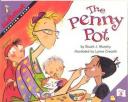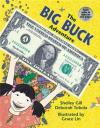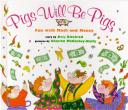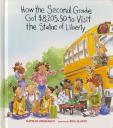Throughout the elementary grades, students learn to work with and manage money. In second grade, the relevant money concepts are addressed in Standard of Learning 2.11. In this SOL, students should learn to count and compare a collection of quarters, dimes, nickels, and pennies whose total is $2.00 or less. Along with that, students should understand that different coin combinations can be used to make equal amounts. They should also learn about the correct usage of money symbols throughout this unit.
Books

The Penny Pot by Stuart Murphy, Illustrated by Lynn Cravath
In The Penny Pot, the students are getting their faces painted at the school fair and Jessie wants to join in on the fun. She has a problem though – it costs 50 cents to get your face painted, and she only has 39 cents! At the table, there is a penny pot where students put their extra change, so Jessie waits and counts the extra change until she has enough money to get her face painted. This is a great book to help students visualize counting money. The pictures of the coins are authentic looking and will translate well to classroom activities with money.

The Big Buck Adventure by Shelley Gill and Deborah Tobola, Illustrated by Grace Lin
In The Big Buck Adventure, a young girl receives a dollar allowance from her dad and is dropped off at a store with hopes to spend her new money. The book explores several different ways that she could spend her money. Each combination of items is described in poem form and the pictures show the objects clearly marked with price tags. This is an effective way for students to see the use of money and prices in real life.

Alexander Who Used to Be Rich Last Sunday by Judith Viorst, Illustrated by Ray Cruz
Alexander's grandparents gave him a dollar last Sunday, and he quickly realizes that he can spend that dollar in many different ways! The book Alexander Who Used to Be Rich Last Sunday is a great way to show students how money that is spent is subtracted from the total amount. There are several fantastic lesson plans to go along with this book.

Pigs Will be Pigs by Amy Axelrod, Illustrated by Sharon McGinley
After finishing off all of their groceries, Mr.Pig, Mrs.Pig, and their two piglets are still hungry but their piggy bank is empty – how will they be able to buy more food? They decide to hunt for their money around the house. Readers of Pigs Will Be Pigs are invited to count along as the pigs find money throughout the rooms of the house. In the end, the money is totaled and the pig family travels to a Mexican restaurant to eat. This book is fitting to the SOL because the students are able to watch the totals change as money is added, as well as look at the menu at the restaurant to see how it is spent.

How the Second Grade Got $8,205.50 to Visit the Statue of Liberty by Nathan Zimelman, Illustrated by Bill Slavin
Students at Newton Barnaby School are on a mission – to fund a field trip to the Statue of Liberty. The second grade students in How the Second Grade Got $8,205.50 to Visit the Statue of Liberty embark on all sorts of projects to raise money – lemonade stand, car wash, candy sale, etc. As readers, students are able to follow the second grade class' journey and help total the money that the class is raising.
Websites
- In the Dollar Store Game, students are told that they are buying different items from the dollar store – everything is a dollar or less! They are given an item that they need to pay for, and then using the variety of coins on the lefthand side, they must drag the correct amount to the cashier at the bottom of the screen.
- In the Counting Money game, students are presented with a line of coins, including quarters, dimes, nickels and pennies. As quick as they can, they must count the coins, add up the value, and type it into the box. They can then check their own answers by clicking on the "Check" button.
- The game Piggy Bank is another way to reinforce students understanding that different coin combinations can be used to make equal values. Students are given a certain monetary amount and then as coins are dropped into a grid, students click on the coins they want to use to make that amount.
- In this lunch food game, students are given a menu with different food items. They are then told how much a certain item is and must drag the right amount of money, in coin form, to the checkout in order to pay for their food.
- In this interactive coin game, the students are given a money total at the top of screen. They then must drag a combination of coins to the top of the chute. As the coins roll down the chute into the jar, the students can watch the value increase until they have made the correct amount.
Additional Resources
- This literature site details specific ways to integrate childrens books into math lessons, and more specifically into the study of money in the lower elementary grades. The site gives 8 examples of books related to money and then provides activities and ideas for lessons to go along with those books.
- Money Money is a set of 11 lesson plans that essentially outlines the unit of exploring coins and money in the second grade. The lessons focus on the objectives that students will be able to identify coins, coin values, and the concept that equal amounts can be reached through different coin combinations. It includes a variety of types of lessons, many that are based on children's literature and that are very interactive.
- The game Clean Up the Money uses a 24-space game board, which the players fill in with 6 nickels, 6 pennies, 6 dimes, and 6 quarters. Then they roll two dice to get an ordered pair. Whatever coin is on that ordered pair, they take and put in a pile. At the end of the game, the students must count their money to find a winner. The great thing about this game is that students will get lots of different coin combinations and it is a great way to integrate ordered pairs into another math concept.
- The U.S. Mint website is chock full of lesson plans and information regarding coins, the history of money, and how money has changed over time. The lesson plans are sorted both by grade and by subject, and there are some great 2nd grade ones about counting money and making different combinations of coins.
